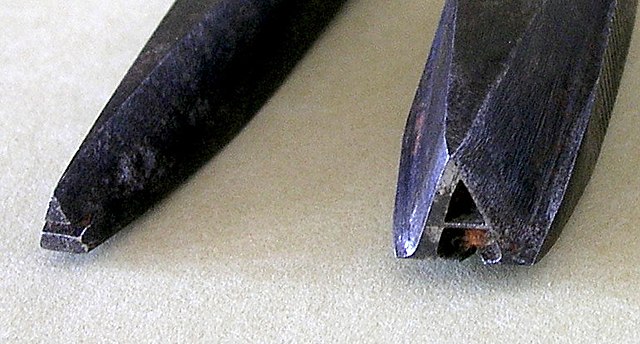Claude Garamont, known commonly as Claude Garamond, was a French type designer, publisher and punch-cutter based in Paris. Garamond worked as an engraver of punches, the masters used to stamp matrices, the moulds used to cast metal type. He worked in the tradition now called old-style serif design, which produced letters with a relatively organic structure resembling handwriting with a pen but with a slightly more structured and upright design. Considered one of the leading type designers of all time, he is recognised to this day for the elegance of his typefaces. Many old-style serif typefaces are collectively known as Garamond, named after the designer.
Claude Garamond
Estienne's 1550 edition of the New Testament was typeset with Garamond's grecs du roi. The result is one of the most sophisticated pieces of printing in the history of metal type, quite unlike Garamond's structured, upright designs in the Latin alphabet.
Garamond's original punches for the Grecs du roi type, which remain owned by the French government.
Punchcutting is a craft used in traditional typography to cut letter punches in steel as the first stage of making metal type. Steel punches in the shape of the letter would be used to stamp matrices into copper, which were locked into a mould shape to cast type. Cutting punches and casting type was the first step of traditional typesetting. The cutting of letter punches was a highly skilled craft requiring much patience and practice. Often the designer of the type would not be personally involved in the cutting.
A punch (left) and the respective matrix produced from it (right). The small letters at the base of the matrix are founders marks.
A counter-punch and a punch for letter A
A punchcutter working for the Imprimerie Nationale demonstrates cutting a punch for a Qu ligature.
A demonstration by punchcutter Nelly Gable. The candle is to transfer soot onto the punch to make a smoke proof, a check of the punch's current impression on paper.







